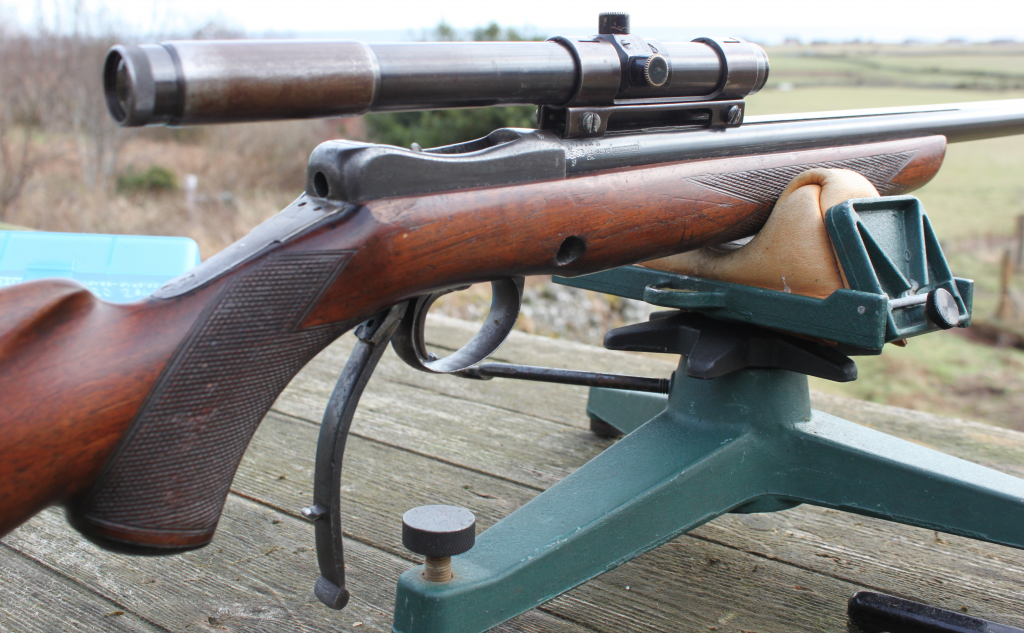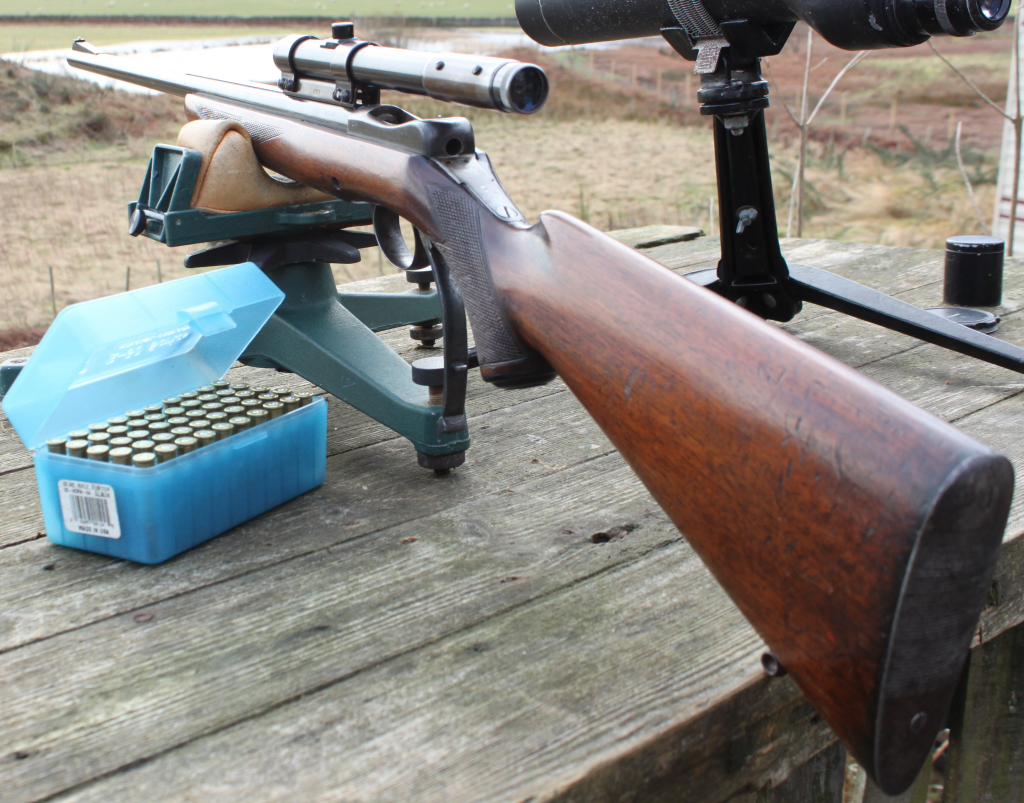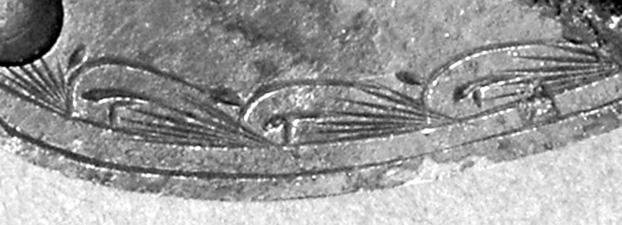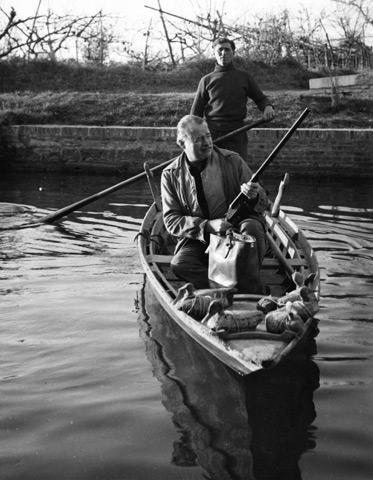

Walloon Lake, Michigan, summer 1904. Ernest Miller Hemingway at the age of 5, posing with a break-action Markham King air rifle that then sold for about 75¢. Markham Co. advertisements pointed out that “Every live, healthy boy wants a ‘King’ Air Rifle. It’s boy nature to want a gun; to want to get out in the fields and woods, nearest to nature, and enjoy youthful life to its fullest extent. Get your boy a ‘King’ Air Rifle. It will mean health and boyish happiness—and steady nerves, keener eyesight and well-developed powers of observation.” Eyesight aside, Hemingway became a convincing testament to Markham’s claim.
JOHN F. KENNEDY LIBRARY

Torcello, Italy, fall 1948. Hemingway shows off his newly acquired Scott gun while setting out with one of Count Kechler’s or Baron Franchetti’s gamekeepers to hunt ducks. Note the decoys in the bow of the boat. Torcello is an island in the Lagoon of Venice, a few miles northeast of the city.
JOHN F. KENNEDY LIBRARY
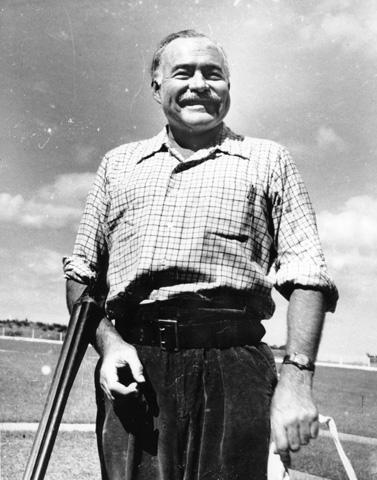
Aging but still fit, Hemingway poses at the Club des Cazadores, in Cuba, with his beloved Scott side-by-side in the late 1940s.
JOHN F. KENNEDY LIBRARY
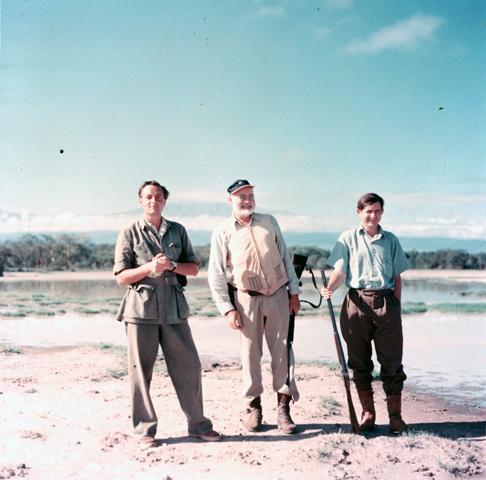
Ernest Hemingway in East Africa on his second safari, from September 1953 into January 1954. On his right is Denis Zaphiro, the Kenya game warden who was attached to the Hemingway party and became the character “G.C.” in Under Kilimanjaro and True at First Light. (G.C. for “gin-crazed,” from the British fondness for gin in general and gin & tonics in the tropics). Although the son of an Egyptian-born Greek trader and bureacrat, Denis was a proper British public-school type, quiet but with a dry, wry sense of humor, good manners, and evident empathy and patience. He was, of necessity, a crack shot and cool under pressure—traits that Hemingway valued highly. He grew close to both Ernest and Mary and in 1957 spent nearly four months as their house guest in Cuba and the US.
On Papa’s left is his middle son Patrick, who at the age of 21, in 1951, relocated to East Africa and for 24 years worked as a white hunter, a forestry officer and an instructor of game wardens and professional hunters. At the time he was based in Tanganyika (Tanzania) and visiting his father in camp. The photo was probably taken by his stepmother, Mary Welsh, the fourth and final Mrs. Hemingway.
JOHN F. KENNEDY LIBRARY

Wingshooting in Kenya, the second safari: Hemingway with his Scott, possibly pass-shooting sand grouse or doves by a water hole somewhere in the open country north of their Kimana camp—a kind of game shooting for which a pigeon gun is well suited. Note the forward sling swivel, which was removed by A&F in 1960. Denis Zaphiro is backing Papa up. Both men have bolt-action rifles handy, just in case. On the skyline behind Zaphiro is Mawenzi, the Kilimanjaro Massif’s second most easterly peak. The main peak, Kibo, swathed in cloud, lies behind Hemingway.
JOHN F. KENNEDY LIBRARY
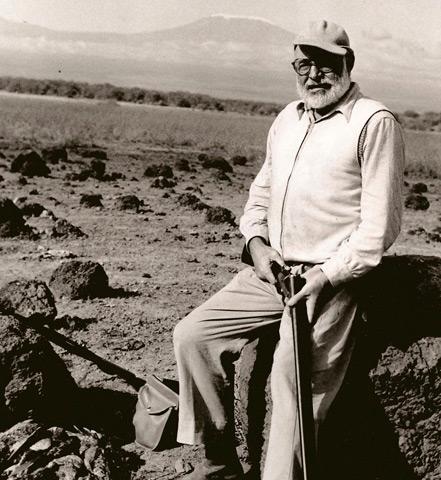
Hemingway cradling his Scott gun, the action open and its Greener-style locking extension clearly visible. The snowcapped summit of Mt. Kilimanjaro, at 19,341 feet the tallest mountain on the African continent, has emerged from the clouds.
JOHN F. KENNEDY LIBRARY
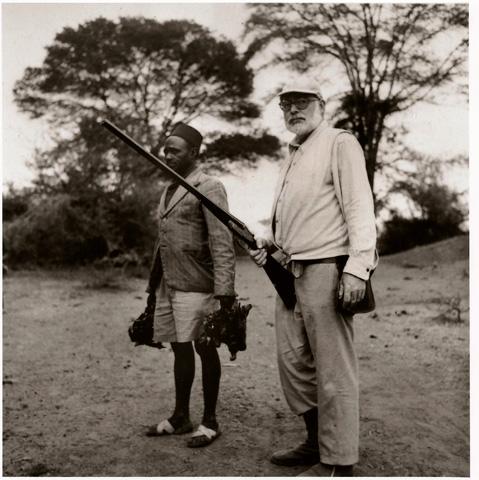
Wingshooting on safari. Still only 54, Papa shows the wear and tear of a rugged, high-mileage, hard-drinking and accident-prone life (although the worst was yet to come). This is the best photo of the long-barreled and straight-stocked Scott gun.
JOHN F. KENNEDY LIBRARY
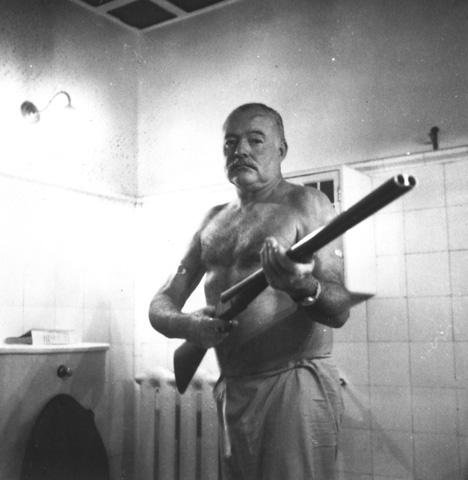
Cuba, late spring 1952. The Finca Vigía had been plagued by a series of break-ins. Hemingway and his 12-gauge Scott were on guard. One night in January ’53 thieves entered the house again. Ernest heard them, slipped out of bed, picked up a .22 rifle and fired a shot at the last one escaping out this bathroom window. Mary wrote that the next morning they found blood on the terrace outside.
JOHN F. KENNEDY LIBRARY

A well-worn W. & C. Scott & Son Monte Carlo B—Serial No. 60293, c. 1898, with 30-inch Damascus (twist-forged) barrels and a stock extension with a soft recoil pad. Note the cocking-indicator window in the lockplate. Appropriately for a pigeon gun, it has a non-automatic safety catch, double triggers and two ivory sighting beads on its rib. The Monte Carlo B also has a Greener-style “treble-grip” locking crossbolt. Lloyd Arnold described Hemingway’s Scott as “a plain piece, but handsome in its clean lines.” This example was loaned to the authors by Rob Shelton, of California, for comparison purposes
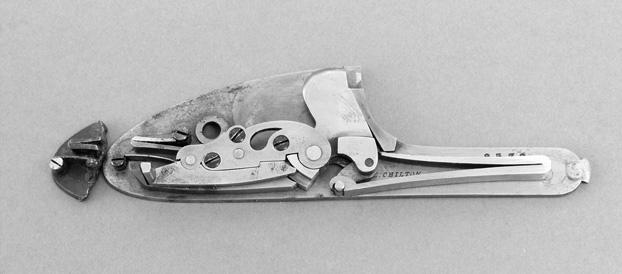
The scrap of destroyed lockplate with the corresponding lock from the Shelton Monte Carlo B, No. 60293. The minor differences, in spring thickness and screws, can be attributed to a difference in age, and thus production, between the two guns.
STEVE HELSLEY

Border-engraving detail from a lockplate of Monte Carlo B No. 60293, the Shelton comparison gun.
STEVE HELSLEY
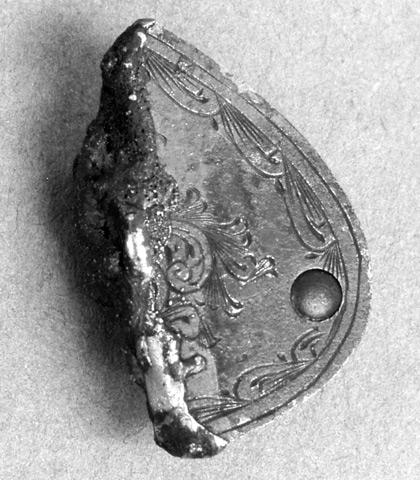
The key to the puzzle—the remnant scrap of left lockplate, less than three-quarters of an inch long, its burnt edge showing the effects of an oxy-acetylene torch.
STEVE HELSLEY
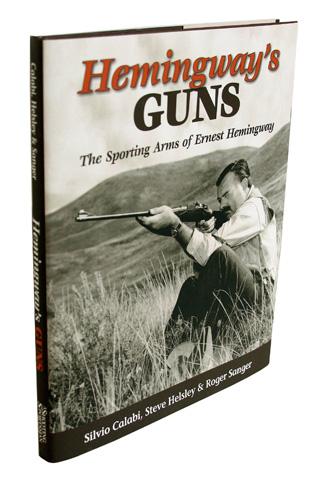
Excerpted from the book Hemingway’s Guns: The Sporting Arms of Ernest Hemingway, by Silvio Calabi, Steve Helsley, and Roger Sanger.
—————————————————————————————-The man REALLY knew how to live! By the way this is a good book to boot. Grumpy




